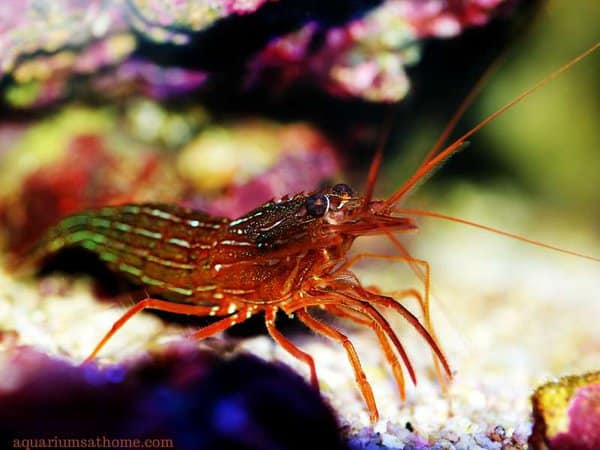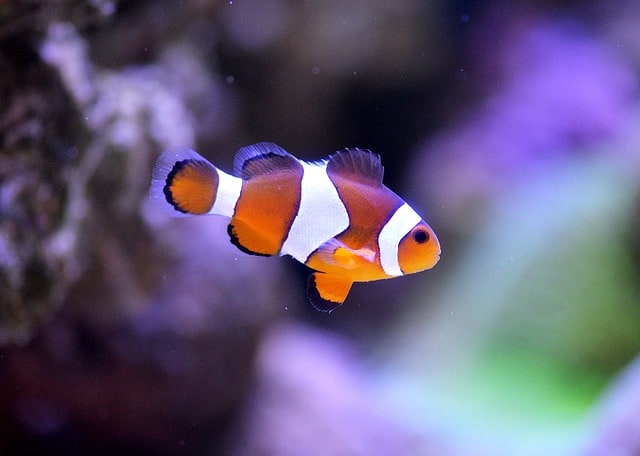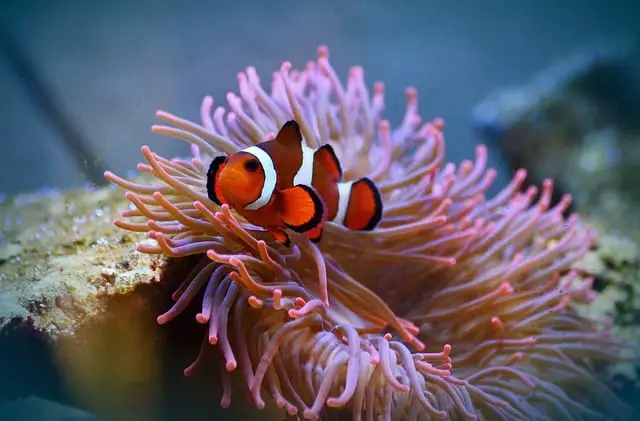Peppermint shrimp are a type of saltwater crustacean and highly popular in the marine aquarist trade. Also known as Caribbean cleaner or candy cane shrimp, this invertebrate is easy to maintain and fun to observe. If you have (or are thinking of keeping) peppermint shrimp, you may be wondering if you can breed them in captivity?
Peppermint shrimp can be bred easily in a saltwater aquarium. Since they’re hermaphroditic, any two can 2 be kept together and if healthy, will mate and reproduce a mere hours after moulting. The key is to keep them in a clean, species-only tank with stable water parameters.
Now that you know it isn’t hard to breed peppermint shrimp in captivity, let’s explore this topic further together. We’ll discover how to tell the difference between males and females, what tank conditions are required for breeding, what to feed adults to encourage breeding as well, how to care for hatchlings, and what to do with unwanted offspring.
So, if you’re ready to learn more about peppermint shrimp and their reproductive habits in captivity, then please read onward…
Do Peppermint Shrimp Breed in Aquariums?
Peppermint shrimp will breed with ease in an aquarium, if the environmental conditions are suitable that is. In an overcrowded tank with carnivorous tankmates, peppermint shrimps are more likely to be eaten than reproduce. For this reason, a species-only tank is recommended for breeding purposes.
Maintaining high water quality is the key to successful peppermint shrimp breeding in captivity. An ‘unclean’ or toxic environment with high ammonia or copper levels can lead to a bacterial illness known black spot disease which ultimately results in death, if not properly treated and promptly rectified.
How do You Tell the Difference between Male and Female Peppermint Shrimp?
To sex peppermint shrimp, look for the saddle – a feature found only on females. A saddle is a green or yellow spot just behind the head of the shrimp. It consists of unfertilized eggs which signifies sexual maturity and a readiness to mate.
This species is hermaphroditic (meaning it has both male and female sex organs) and can swap genders for the purposes of procreation. Even if you have all males, the biggest and most dominant will switch sex to female and mate with one of the males.

How do You Breed Peppermint Shrimp?
To breed peppermint shrimp in captivity, you must begin with a colony of at least 4 to 6 shrimp. Since this species is hermaphroditic, you need not worry about getting both males and females. Any random group will lead to pairings and breeding will ultimately ensue.
Peppermint shrimps are cannibalistic so don’t be alarmed if a few don’t make it. Survival of the fittest and the desire to reproduce will subsequently lead to procreation. Once molting has occurred, these invertebrates will start to breed almost immediately.
What Water Conditions are Best for Breeding Peppermint Shrimp?
To promote breeding, you must ensure the tank conditions are conducive to the peppermint shrimp species. For a pair, you’ll need a 20-gallon marine aquarium. If you purchase a colony of 4 to 6 shrimp, then you’ll need to setup at least a 40-gallon species-only tank.
The water parameters must be suitable for this saltwater species to reproduce successfully in captivity. The temperature in the tank should be between 64- and 72-degrees Fahrenheit so you’ll need a heater. If the water is too cold, peppermint shrimp may survive but won’t breed.
The pH level in the tank should be stable, ranging between 8.1 and 8.4. The carbonate hardness of dKH should be anywhere from 8 to 12 with a specific gravity of 1.023 to 1.025. A gentle filter and air stone are recommended to keep the water clean and help promote circulation and oxygenation.
Though peppermint shrimp are hardy and adaptable to fluctuating water conditions, keeping the temperature, pH, and salinity as stable as possible is needed for optimal health. Like other aquatic creatures, they don’t tolerate high nitrate or copper levels, so it’s imperative to keep the water clean.
What do You Need in a Peppermint Shrimp Breeding Tank?
In addition to a heater and an air stone, you’ll also need a lightly powered filter, some soft sandy substrate, and live rock in your peppermint shrimp breeding tank. As a nocturnal species, they prefer a dimly lit environment so keep them out of direct sunlight. An adjustable LED aquarium light is best.
This species needs both areas of coverage for hiding purposes and open areas for food foraging. They’re nocturnal and will breed at night. Soon after they molt, they’re likely to mate so keep the old shell in the tank as they’ll feast on it later to restore lost calcium in their bodies.
Don’t add fish or other crustaceans to the breeding tank as they may prey upon the shrimp larvae or vulnerable molting adults. A species-only aquarium with just a pair or small grouping of peppermint shrimp is recommended.
What to Feed Peppermint Shrimp to Encourage Breeding?
Feeding peppermint shrimp a protein-rich diet of shrimp pellets, flaked foods, and frozen mysis will help promote successful breeding. This species is omnivorous and will also feast on food debris, detritus and even decomposing plant matter. As scavengers, they’ll eat just about anything edible they can find!
Being nocturnal, they’ll typically feed at night. Offer food just prior to the light turning off or when the moonlight feature is activated. They’re cleaner shrimp and will even feed upon fish- and coral-stinging aiptasia (glass anemones typically considered pests in a saltwater tank).
How Many Offspring do Peppermint Shrimp Have?
Peppermint shrimp females can carry up to 300 green or yellow eggs under their belies, though only 20 to 30 are likely to hatch. The process take 2 to 3 weeks at which points eggs will become darker in color the closer they get to hatching.
To care for peppermint shrimp hatchlings, be sure to feed them at least 5 times per day every 2 to 3 hours. Offering baby brine shrimp for the first week is recommended. After 2 weeks, you can start to feed them chopped up mysis shrimp, krill, and plankton as well as some crushed flakes.
What to do with Unwanted Peppermint Shrimp Offspring?
Selling or rehoming unwanted peppermint shrimp is the better alternative – as opposed to killing them, that is. Call you local pet shop and see if they’re interested in taking them off your hands. Or, if you know other aquarists, inquire if they’d like a few peppermint shrimps for their marine tanks.
To prevent unwanted peppermint shrimp breeding in captivity, keep only a single shrimp for cleaning purposes. As a hermaphroditic species, any two random shrimp, even those of the same gender, have the potential to breed and multiply rapidly.
Final Thoughts
To conclude, peppermint shrimp breed easily in captivity. You only need 2, regardless of sex since they’re hermaphroditic. Getting a small group of 4 to 6 will help ensure mated pairings and boost the chances of successful reproduction. A species-only tank with the stable water conditions is a must.
I trust this article has been of help in answering your questions about peppermint shrimp and their reproductive behaviors in captivity. Thanks for reading and best of luck with your aquarist hobby!
Recommended Posts
Best Shrimp for a Reef Tank (Top 10 Picks)
What Fish Can be Kept with Shrimp?
Should You Feed Peppermint Shrimp?




